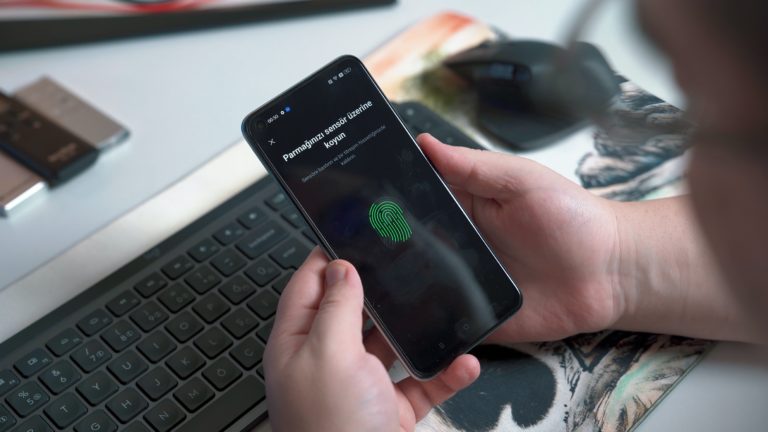The ability to quickly identify and verify individuals has been a crucial skill in human society, since the start of civilization. Where previously face-to-face recognition would have sufficed in tribes and small villages, thanks to today’s rapidly growing global population we require more tools to quickly identify who someone is.
In the workplace, the need to identify individuals is particularly important, as it’s often tied to staff attendance, payroll, and workplace security. Throughout the years various solutions have been used to verify staff attendance from paper timesheets, to the Bundy Clock, to fingerprint and biometric scanners. Despite the best efforts of some die-hard fans, the fingerprint scanner has reached its limit, being surpassed by the electronic time clock.
With so many other solutions available at our fingertips, why are some people so desperately clinging to their fingerprint scanner? Surely we’ve all seen enough spy movies to know fingerprint scanners aren’t foolproof, let alone feasible in today’s day and age where most of the fun comes from trying to fool the system. And yet, it’s something that we still occasionally hear, “why don’t you have fingerprint scanners?”
So to put the debate to rest once and for all, here are three reasons why fingerprint scanners don’t work. And before you start saying, ‘but what about this…” here are three great reasons why the electronic time clock has surpassed the fingerprint scanner.
3 Reasons Why Fingerprint Scanners Don’t Work to Track Staff Attendance
1. They’re Expensive
No matter which way you look at it, fingerprint scanners are expensive equipment. Despite the fact that the technology has been around for years, the cost of the device still remains relatively high, potentially setting you back a few thousand dollars. In addition to the device, the cost of the integration between the scanner and corresponding system can be expensive to build. The scanners are delicate and aren’t always built to handle the hundreds of fingerprints pressed onto them throughout their lifetime. Which brings me to my next point…
2. They’re Unreliable
Unlike your favorite FBI crime-show encryption-grade biometric scanners, workplace fingerprint scanners are notoriously unreliable. In order to correctly identify and record an individual, fingerprint scanners require a clear image or impression of your fingerprint. Fingers that are dirty, greasy, cold or wet for example, often don’t register on the scanner, making it hard to both clock out and verify the individual. Employers who prefer to use fingerprint scanners, do so because they think it’s easier than remembering a passcode. However should the fingerprint scanner fail to register the scan, some systems will request a passcode. Not only is this an additional hassle to staff who are trying simply to clock in or out, but it also opens the window to time theft through buddy clocking.
3. Maintenance is a Pain
As previously mentioned, fingerprint scanners are not cheap. They’re a costly purchase and are even more expensive to repair or replace when they wear out. Repairing a broken scanner requires a specialized technician and often costly parts. On the occasion that it is easier to replace than repair, users often run into more problems as they are not readily available at your local electronics store. On top of this, users often experience issues around the device’s durability, which lead to additional maintenance costs and ultimately a new device down the track.
Introducing the 21st Century Solution
Electronic time clocks are the most robust, user-friendly, and affordable solution to record staff attendance. According to Statista, 38.59 million British people are expected to own a tablet device this 2017. Leveraging this statistic, a tablet-based time clock like Tanda can provide an effective and consistent solution to time theft, streamlining your entire payroll process.
3 Reasons Why Electronic Time Clocks are the Market Leading Solution:
1. Affordability
Tablets in their various forms have started to become more commonplace in businesses of all sizes. This is thanks to more core business functions such as POS, inventory, and payment processing, becoming available on tablet devices. This technology is providing business owners with greater mobility to engage with customers, as well as streamlining core business activities in one device. Time Clock tablets are easily accessible, affordable and present a number of additional benefits to a business looking to improve their customer offering.
2. Robust and Reliable
Thanks to the prevalence of tablet usage, most people are familiar with how to use a tablet and how they should be treated. Tablets are touch-screen based and as such built to handle lots of little fingers pushing and tapping the screen. Tanda’s Time Clock verifies staff attendance through photos and PIN code verification. Which means that unlike a fingerprint scanner, it doesn’t matter if staff have dirty or wet fingers, they’ll still be able to clock out the first time around. The timestamp and photo verification also make it quick and easy for managers and business owners to quickly check that the right person has clocked in and out for the correct shift.
3. Cloud-Based for More Options
Using a cloud-based Time Clock solution like Tanda provides users with more options, which enable rather than restrict the user. Software maintenance and upgrades are not required, as they’re done automatically in the system. Devices are easy to replace and interchangeable, and should the system connection be disrupted, all clock in data is stored locally and uploaded to the cloud later. In addition to this, as a backup, users can access the Time Clock app through a browser on a desktop. Using a cloud solution to track staff attendance provides unparalleled opportunities to streamline additional business administration tasks, as well as providing greater insight into labor costs, staff punctuality, and staff engagement.
Workplaces are busy places, and managers have much better things to spend their time on than trying to get the fingerprint scanner to work. Using electronic Time Clocks to track employee attendance allows staff to clock in quickly and efficiently so that they can get out of the backroom and working in your business. Because at the end of the day, you need a system that is affordable, reliable, and accessible, so that you can get on with paying staff and focusing on your business.








